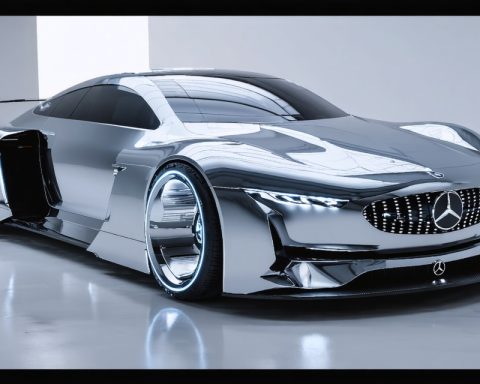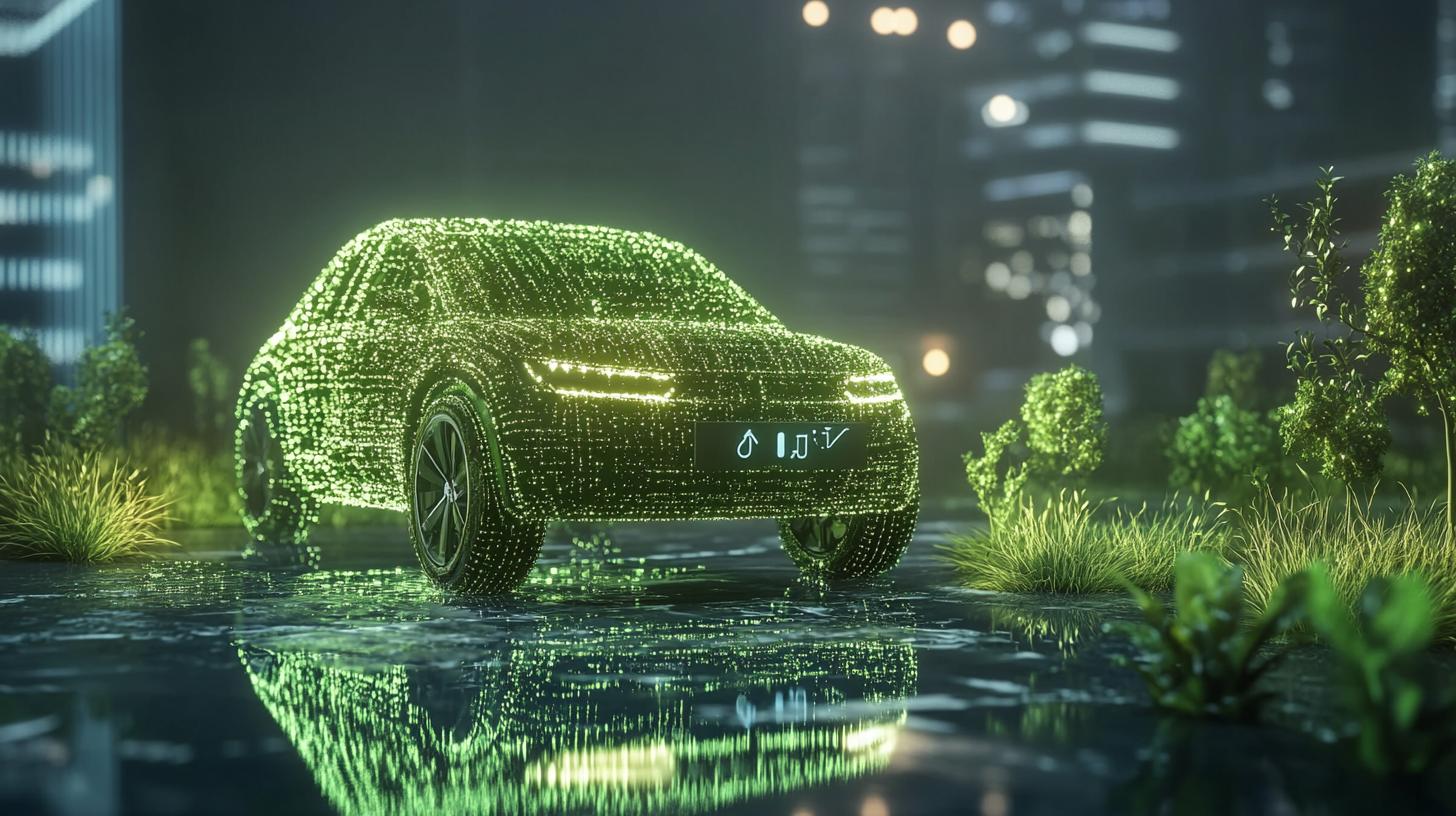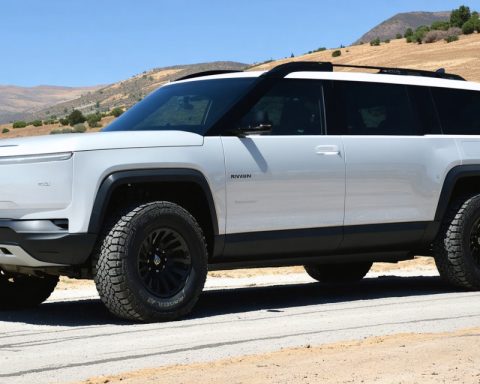- CATL leads the electric vehicle (EV) revolution with groundbreaking battery technology.
- The company’s condensed batteries offer higher energy density, extending driving ranges and reducing charging time for EVs.
- Through robust research and development, CATL focuses on fast-charging and long-life performance, attracting global carmakers.
- CATL advocates for sustainability by improving battery recycling and embracing circular economy practices.
- The company plays a crucial role in transitioning industries to greener commercial fleets, aligning profitability with environmental goals.
- CATL’s innovations redefine the EV landscape, making clean transportation more accessible and practical.
- The electric future CATL envisions signals a significant shift towards more sustainable, efficient urban environments.
In the heart of China’s bustling innovation districts, Contemporary Amperex Technology Co., Limited, or CATL, stands as a beacon of technological prowess, powering the future of electric mobility. With industries worldwide shifting gears towards sustainability, CATL emerges as a leader, brilliantly recharging our drive towards greener transportation.
Imagine a world where the hum of clean, silent electric vehicles (EVs) replaces the roar of combustion engines. CATL’s revolutionary batteries bring us closer to this vision. The company, founded in 2011, quickly propelled itself to the forefront of the lithium-ion battery industry, outpacing competitors through relentless innovation and strategic prowess.
Innovation with Impact: CATL doesn’t just build batteries; it crafts the soul of the electric revolution. Its latest innovation, the condensed battery, promises higher energy density and enhanced safety, shattering the traditional constraints that weighed down EVs. These batteries not only extend driving ranges but also reduce charging time, making EVs more convenient and practical for everyday use.
The cutting-edge technology at CATL’s fingertips stems from a deep commitment to research and development. Imagine a battery that could charge in the time it takes to sip a cup of coffee. CATL’s investments in fast-charging capabilities and long lifecycle performance create ripples across the automotive sector, sparking interest from leading carmakers globally eager to incorporate these advancements into their fleets.
The Bigger Picture: Beyond innovation, CATL aligns with global sustainability goals. By enhancing battery recycling processes, they address the life cycle impact of battery production, embracing circular economy principles. This not only mitigates environmental harm but also curtails costs, making EVs an economically viable choice for many.
Envision cityscapes transformed by electric buses and delivery vans, their reduced emissions cleansing urban air and mitigating climate change effects. With CATL’s strength in powering commercial vehicles too, industries look forward to a shift that marries profitability with planet-friendly practices.
The Takeaway: As we accelerate towards a future defined by clean energy, CATL proves pivotal. By pushing the boundaries of what batteries can achieve, they don’t merely support the EV industry; they reshuffle its very landscape. The message is clear: tomorrow’s transportation solutions hinge on the innovative spirits leading the charge today.
Through the lens of CATL, the roadmap to an electrified future isn’t just a distant possibility; it’s a powerful, palpable evolution, charging ahead with a sustainable heartbeat. Whether you’re an investor, an environmental advocate, or an everyday commuter, the trajectory CATL charts promises a cleaner, more efficient world. Embrace the change and ride the wave of electrification—because the future is undeniably electric.
How CATL is Revolutionizing the Electric Vehicle Industry
Comprehensive Overview of CATL’s Role in Electric Mobility
Contemporary Amperex Technology Co., Limited (CATL) is a pioneering force in the electric vehicle (EV) revolution, playing a vital role in transforming global transportation. Here’s a deeper dive into CATL’s innovative initiatives and strategies that are leading the charge in sustainable mobility.
Innovation with Impact
CATL’s development of the condensed battery marks a significant leap in battery technology. This advancement promises higher energy density, which is crucial for longer driving ranges—one of the most critical factors for potential EV buyers.
– Higher Energy Density: CATL’s condensed batteries allow an increase in vehicle range without expanding battery size, directly addressing concerns of range anxiety.
– Enhanced Safety Features: By refining battery chemistry and architecture, CATL ensures improved safety measures, which is vital for consumer acceptance and regulatory compliance.
– Faster Charging Capabilities: The company’s focus on reducing charging times enhances the practicality of EVs, making them more appealing to consumers used to the convenience of traditional refueling.
Market Forecasts & Industry Trends
Industry analysts predict significant growth in the EV market, with CATL positioned at the forefront:
– Global Market Dominance: CATL currently leads as the world’s largest lithium-ion battery manufacturer, supplying major automotive brands such as Tesla, BMW, and Volkswagen.
– Strategic Partnerships: Collaborations with global automotive giants enable the integration of CATL’s advanced battery technology into a wide range of vehicle models, thus expanding their market reach.
– Sustainability Initiatives: By investing in battery recycling technologies, CATL demonstrates its commitment to the circular economy, crucial for long-term sustainability in battery manufacturing.
Pros & Cons of CATL’s Innovations
– Pros:
– Extensive EV Range: Enhanced energy density offers extended travel capabilities.
– Economic and Environmental Benefits: Efficient recycling processes and reduced waste decrease the overall environmental impact and potentially lower costs.
– Safety Improvements: Innovative materials and engineering contribute to safer battery use.
– Cons:
– Production Costs: Advanced battery technology can lead to higher initial manufacturing costs, which may influence vehicle pricing.
– Infrastructure Needs: The effectiveness of fast-charging batteries hinges on widespread availability of compatible charging stations.
Controversies & Limitations
CATL faces challenges typical of rapidly evolving technology sectors:
– Resource Availability: The demand for materials like lithium and cobalt, essential for battery production, raises environmental and ethical concerns regarding mining practices.
– Geopolitical Risks: Global supply chain instability can impact material sourcing and cost dynamics, potentially altering production timelines.
Real-World Use Cases & Predictions
– Urban Transportation: With an eye on cleaner urban environments, CATL’s batteries power electric buses and delivery vans, contributing significantly to reducing city pollution levels.
– Driving the Future of Autonomous Vehicles: As autonomous EV technology advances, battery efficiency and reliability become even more critical, a space where CATL looks to secure its influence.
Actionable Recommendations
For those exploring the EV market either as consumers or investors, understanding CATL’s trajectory provides strategic insights:
– Invest in Companies Leading Sustainability Initiatives: CATL’s focus on the circular economy makes it an attractive prospect for investors prioritizing sustainable practices.
– Stay Informed About Charging Infrastructure Developments: As EV adoption grows, so will the need for charging networks. Keeping abreast of these developments can aid in planning for potential EV purchases.
– Consider Total Cost of Ownership: While the upfront cost of EVs may be higher, long-term savings on fuel and maintenance, along with government incentives, can make the transition economically beneficial.
For more insights into sustainable technologies and investments, visit CATL.
The future of transportation is electric, and with companies like CATL leading the way, the transition promises to be both efficient and environmentally responsible.


















